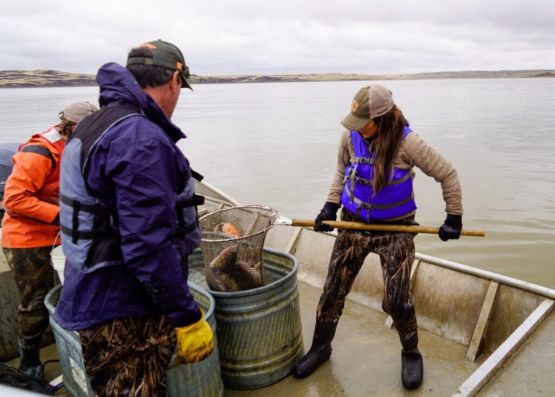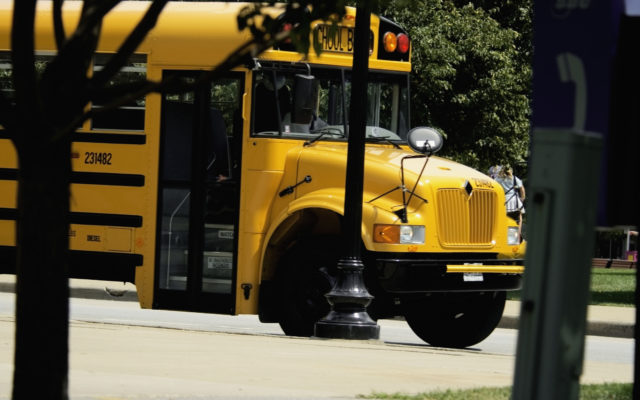Fish populations affected by severe winter kill, restoration efforts underway

May 12, 2023
PIERRE, S.D.–Winter kills had a larger-than-average impact on the state’s fish populations in 2022-23, the state’s fisheries program manager told the South Dakota Game, Fish and Parks Commission last week.
“It was, unfortunately, really prime conditions for winter kill across South Dakota,” said Jake Davis. “All regions experienced some winter kill to some level on some of their systems.”
During winter, a lack of dissolved oxygen in bodies of water can lead to a “winter kill.”
Joshua Haiar with South Dakota Searchlight reports the conditions that cause a winter kill begin to form when lakes and rivers freeze over. The ice and snow cover prevents the exchange of oxygen between the water and the atmosphere, preventing aquatic plants from producing oxygen. Decomposing plant and animal remains, meanwhile, continue to consume the limited amount of available oxygen.
The severity of a winter kill depends on factors like the duration and thickness of the ice and snow cover, the size and depth of the body of water, and the availability of alternative habitats for fish to seek refuge.
The shallow wetlands and creeks of South Dakota, with their limited capacity to hold dissolved oxygen under ice, were particularly affected during the winter of 2022-2023.
“We have a lot of systems that are quite shallow, and what that means, generally, is that capacity to store dissolved oxygen under the ice is a lot lower than a deeper system with higher volume,” Davis said.
The combination of low water levels from the fall drought and the winter’s heavy snowfall exacerbated the situation. However, Davis said that winter kill can have positive outcomes, especially in reducing populations of undesirable species like common carp and black bullhead, which are challenging to manage through human intervention.
Game, Fish and Parks relies on reports from both their staff and the public to identify winter kills. Staff regularly conduct winter checks, while conservation officers engage with landowners and monitor systems for signs of a kill. The damage assessment involves “test netting,” where trap nets are set to determine the extent of the kill and tally the remaining fish. Such assessments guide stocking strategies for restocking fish in affected water systems.
Winter kill severity varied across South Dakota. In the west, severe kills were observed in four water bodies, while the central and southeastern regions recorded winter kills in 21 and 22 water bodies, respectively. The situation in the northeast was still being assessed at the time of the briefing, as ice cover remained in that area.
“There were an awful lot of systems that didn’t experience winter kill, too,” Davis noted.
Game, Fish and Parks is restocking through their hatcheries and the trap-and-transfer method. Hatchery-raised walleye, largemouth bass, bluegill, and rainbow trout are commonly stocked into the state’s water bodies. Adult fish from excess populations in certain fisheries can also be moved to other systems to improve angling opportunities and boost the reproductive potential of the transferred fish, Davis said.
“We have restocked most of these systems, or we’re in the process of doing that,” He said, pointing to GF&P fisheries staff having conducted dozens of restocking efforts across the state in recent weeks.
Davis assured the public that restocking efforts were well underway, with most affected systems already restocked. Numerous lakes and water bodies were not affected, he said, and offer excellent fishing opportunities.




